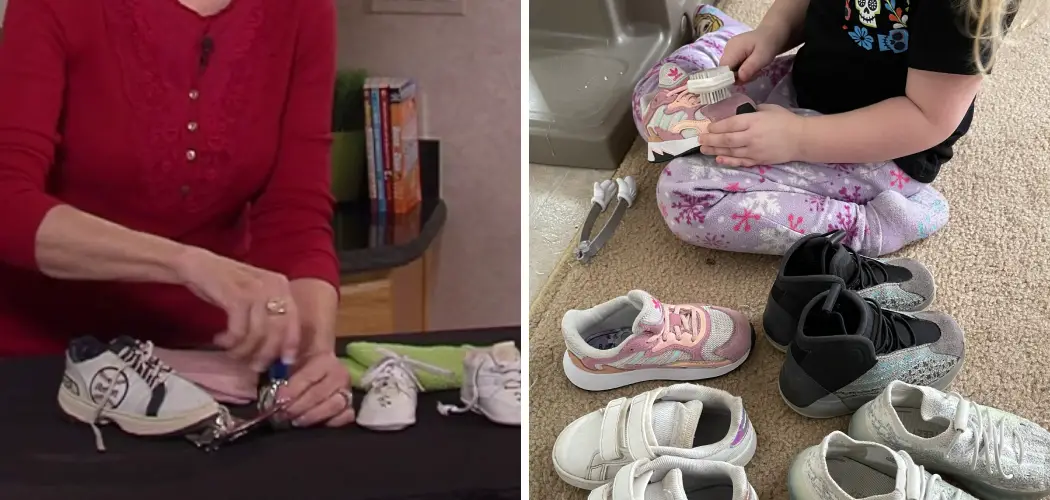Keeping kids’ shoes clean is essential for maintaining their appearance, hygiene, and longevity. Children’s shoes often endure a considerable amount of wear and tear, from playground adventures to messy crafts, making regular cleaning a necessity. However, cleaning kids’ shoes can be a challenging task, especially when dealing with various materials and stains.
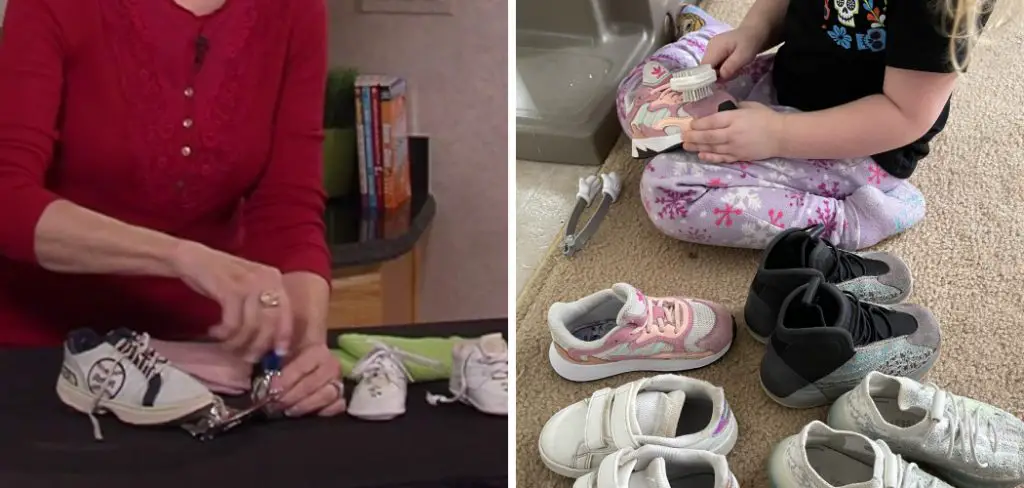
In this article, we’ll explore effective methods and tips for how to clean kids shoes, ranging from gentle handwashing techniques to machine washing options for certain types of footwear. By learning how to clean kids’ shoes properly, parents can ensure that their children’s footwear remains fresh, comfortable, and ready for all the adventures ahead.
Importance of Clean Shoes
Keeping shoes clean is more than just about maintaining their aesthetic appeal; it plays a crucial role in promoting good foot health and hygiene. Dirty shoes can become breeding grounds for bacteria and fungi, leading to unpleasant odors and potentially contributing to foot conditions such as athlete’s foot. Regularly cleaning your child’s shoes can also extend their lifespan, helping to preserve the material and structure of the footwear.
Clean shoes reflect on personal hygiene and are often required for school or sports activities, making it important for children to learn the value of cleanliness from an early age. Additionally, teaching children to care for their belongings by keeping their shoes clean instills a sense of responsibility and pride in their possessions.
Challenges Parents Face in Keeping Kids’ Shoes Clean
For many parents, keeping their children’s shoes clean is an ongoing battle fraught with various challenges. Firstly, kids are naturally active and adventurous, often playing in mud, puddles, or dusty playgrounds without a second thought about their footwear. This constant exposure to dirt and grime means their shoes require frequent cleaning, which can be time-consuming for busy parents.
Additionally, different materials require specific cleaning methods; leather, suede, and canvas each have their own needs and limitations, complicating the cleaning process. Another significant challenge is the drying time. Some shoes cannot be dried quickly, which is problematic when children have a favorite pair they wish to wear daily.
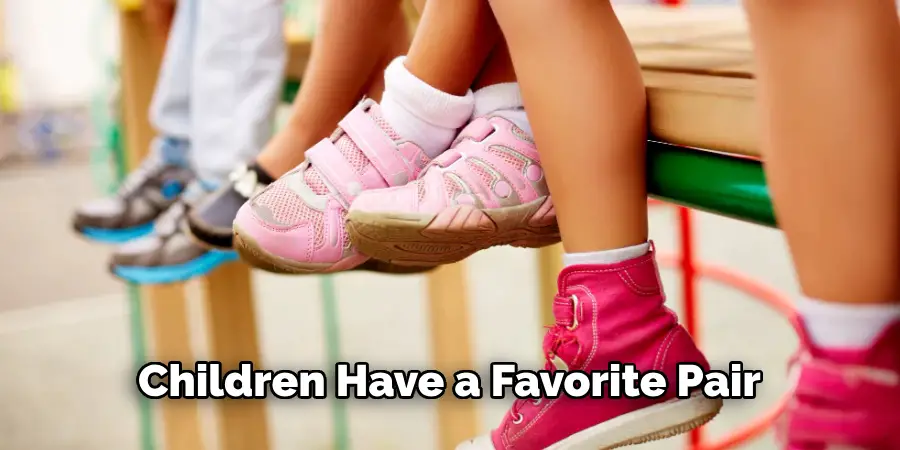
There’s also the issue of stubborn stains, such as grass or paint, which are not only difficult to remove but also require gentle handling to avoid damaging the shoes. Balancing the need for thorough cleaning with the care necessary to preserve the shoes over time poses a constant dilemma for parents.
Understanding Kids’ Shoes
Before we venture into the specifics of cleaning, it’s crucial to have a fundamental understanding of kids’ shoes and the materials they are made from. Children’s footwear is designed to withstand a lot of activity, but the variety of materials used—such as leather for durability, canvas for breathability, and synthetic fabrics for flexibility—each require particular care to maintain their integrity over time.
It’s also essential to recognize that kids’ shoes often come with embellishments such as sequins, beads, or light-up features, which add to the cleaning challenge. These components can be delicate and may not withstand rigorous cleaning methods.
Additionally, the structure of kids’ shoes, including support insoles and non-slip soles, plays a significant role in ensuring the comfort and safety of the child, making it paramount not just to clean the shoes but to do so in a way that doesn’t compromise these essential elements.
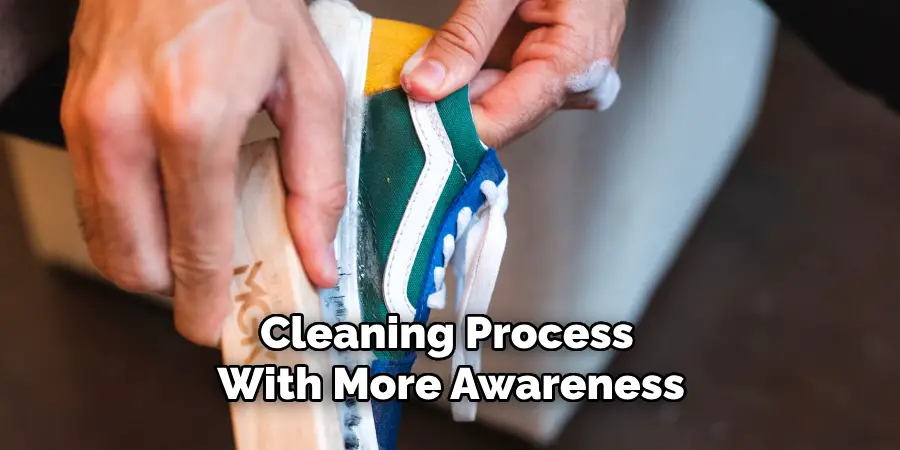
Having this understanding allows parents to approach the cleaning process with more awareness and precision, ultimately prolonging the wearability and appearance of their children’s shoes.
Common Materials Used in Kids’ Shoes
Kids’ shoes are crafted from a variety of materials, each selected for its unique properties and intended use. Understanding these materials is key to effectively cleaning and maintaining the shoes. Here are some of the most common materials used:
- Leather: Often used for school shoes and formal footwear, leather is prized for its durability and ability to mold to the foot. It requires regular conditioning and careful cleaning to prevent cracking and drying out.
- Suede: Suede, a type of leather with a napped finish, is soft and flexible, making it a popular choice for comfortable kids’ shoes. It can be challenging to clean due to its sensitivity to water and requires special suede-specific products.
- Canvas: Widely used in casual and athletic shoes, canvas is a lightweight and breathable material. It’s relatively easy to clean, often allowing for machine washing, but can take longer to dry.
- Synthetic Fabrics: These include materials like nylon and polyester, which are used for their strength, elasticity, and moisture-wicking properties. Synthetic shoes can often be washed easily but may vary in drying time.
- Rubber: Commonly used for soles and rain boots, rubber is durable and waterproof. It’s easy to clean with just soap and water but may need specific treatments to maintain its condition and remove scuff marks.
Each material brings its advantages to kids’ footwear but also comes with specific cleaning and care requirements. Knowing the type of material can guide parents in choosing the appropriate cleaning method to ensure the shoes last longer and remain comfortable and safe for their children’s feet.
Shoe Care Instructions to Consider
When approaching the task of cleaning and maintaining kids’ shoes, it is vital to consult the shoe care instructions provided by the manufacturer. These guidelines are often found on tags attached to the shoes or on the brand’s website and can offer critical insights into the do’s and don’ts specific to the footwear material.
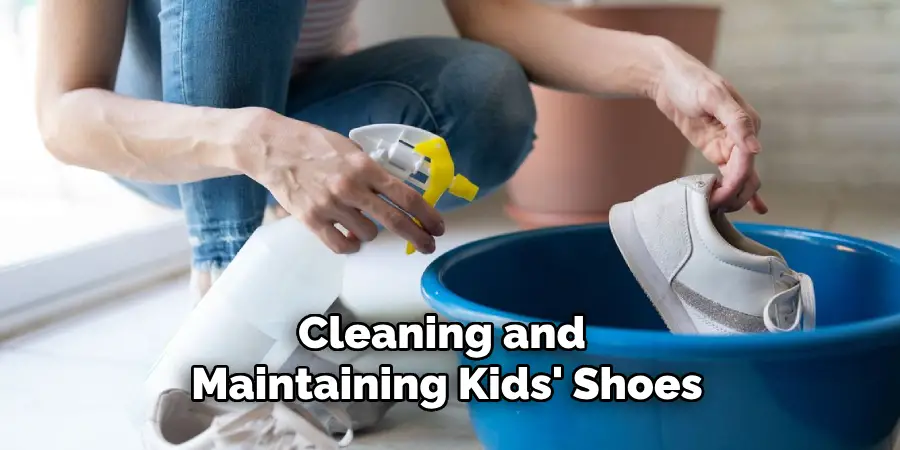
For instance, leather may require a damp cloth for cleaning followed by an application of conditioner, while suede might need a special brush to keep its texture. Canvas and synthetic fabrics, being more resilient, can often withstand machine washing, but the instructions may suggest air drying to prevent shrinkage or deformation.
Adhering to these care instructions not only ensures that the shoes are cleaned effectively but also helps in preserving their original quality and extends their life span. Ignoring such guidelines can lead to faded colors, damaged materials, or a complete breakdown of shoe components like insoles and fastenings. Therefore, taking a moment to understand and follow the specific care instructions for each pair of kids’ shoes is an essential step in shoe maintenance that parents should not overlook.
10 Methods How to Clean Kids Shoes
1.Handwashing with Mild Soap and Water:
For most types of kids’ shoes, handwashing with mild soap and water is an effective and gentle cleaning method. Start by removing any surface dirt or debris with a soft brush or cloth. Then, mix a small amount of mild detergent or soap with warm water and use a sponge or cloth to clean the shoes thoroughly. Pay particular attention to areas with stubborn stains or dirt buildup, such as the soles and creases. Rinse the shoes with clean water and allow them to air dry away from direct sunlight.
2.Spot Cleaning with Vinegar Solution:
For tougher stains or odors, spot cleaning with a vinegar solution can be highly effective. Mix equal parts white vinegar and water in a spray bottle and spray the solution directly onto the stained areas of the shoes. Allow the vinegar solution to sit for a few minutes before gently scrubbing the stains with a soft brush or cloth. Rinse the shoes with clean water and let them air dry thoroughly.
3.Machine Washing Canvas Shoes:
Canvas shoes, such as sneakers and slip-ons, can often be safely cleaned in the washing machine. Remove any excess dirt or debris from the shoes and place them in a mesh laundry bag to protect them during the wash cycle. Use a gentle detergent and cold water setting to wash the shoes, avoiding hot water and harsh detergents that can damage the material. After washing, air dry the shoes thoroughly before wearing them again.
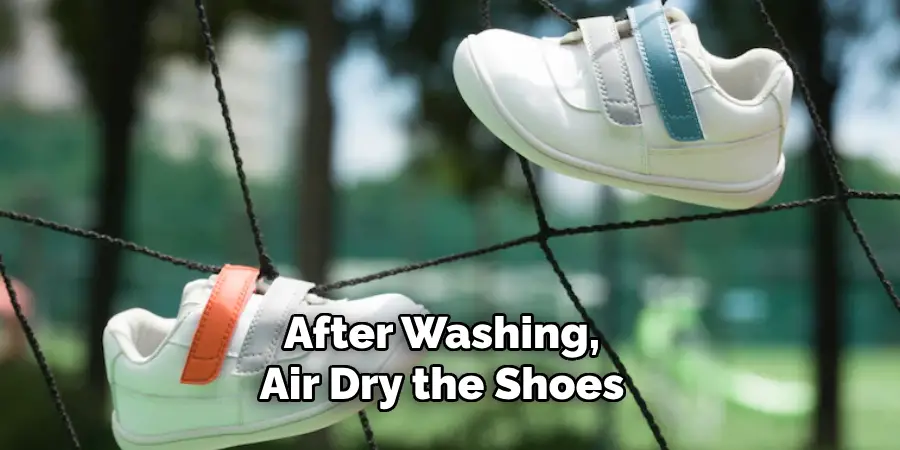
4.Cleaning Leather Shoes with Leather Cleaner:
Leather shoes require special care to maintain their appearance and integrity. Use a leather cleaner specifically designed for shoes to remove dirt and stains gently. Apply the cleaner to a soft cloth and gently wipe the shoes in a circular motion, focusing on areas with dirt or scuff marks. Avoid using excessive water or harsh chemicals, as these can damage the leather. After cleaning, use a leather conditioner to moisturize and protect the shoes.
5.Brushing Suede Shoes:
Suede shoes should be cleaned with a soft-bristled brush to avoid damaging the delicate material. Use a suede brush or a clean toothbrush to gently brush away surface dirt and restore the nap of the suede. For stubborn stains, lightly dampen the brush with water and continue brushing in a circular motion. Allow the shoes to air dry completely and then brush them again to fluff up the suede.
6.Removing Gum with Ice:
If your child’s shoes have gum stuck to them, you can remove it easily using ice. Place a few ice cubes in a plastic bag and hold it against the gum for a few minutes to harden it. Once the gum has hardened, use a blunt object like a spoon or butter knife to gently scrape it off the shoe. Be careful not to scratch or damage the shoe material in the process.
7.Deodorizing with Baking Soda:
To eliminate odors from kids’ shoes, sprinkle a small amount of baking soda inside each shoe and let it sit overnight. Baking soda is a natural deodorizer that absorbs odors and helps freshen up shoes. In the morning, shake out the excess baking soda and your child’s shoes will be odor-free and ready to wear.
8.Washing Rubber and Plastic Shoes:
Rubber and plastic shoes, such as rain boots and sandals, can be easily cleaned with soap and water. Use a mild detergent or dish soap and a sponge or cloth to clean the shoes inside and out. Rinse them thoroughly with clean water and allow them to air dry completely. Avoid using harsh chemicals or abrasives, as these can damage the material.
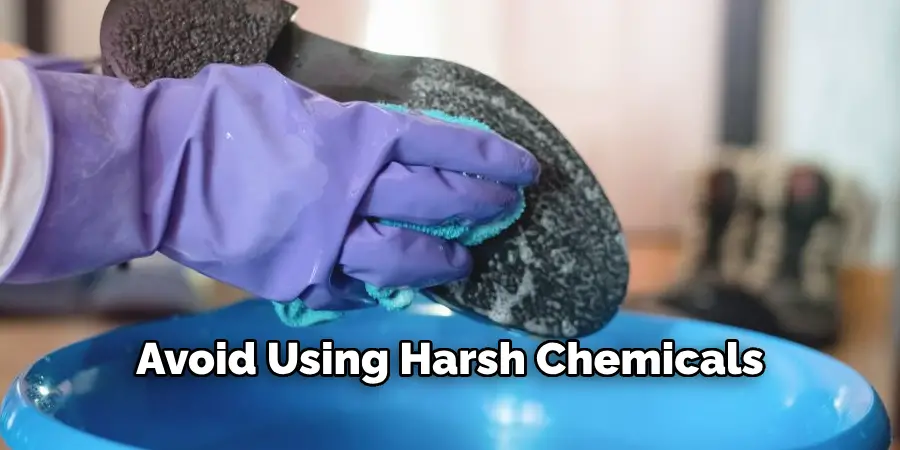
9.Drying Properly:
After cleaning, it’s essential to dry kids’ shoes properly to prevent mold and mildew growth. Avoid placing them near direct heat sources like radiators or heaters, as this can cause the material to warp or crack. Instead, stuff the shoes with crumpled paper towels or cloth to help absorb moisture and maintain their shape. Allow the shoes to air dry in a well-ventilated area away from direct sunlight.
10.Regular Maintenance and Prevention:
To keep kids’ shoes clean and well-maintained, encourage your child to take them off before entering the house to prevent tracking dirt and mud indoors. Regularly inspect the shoes for signs of wear and tear, such as loose stitching or worn-out soles, and address any issues promptly to prolong the lifespan of the shoes. Additionally, consider applying a waterproofing spray or protective coating to new shoes to help repel water and prevent stains.
Cleaning Different Types of Kids’ Shoes
Each type of kids’ shoe material requires a unique approach to ensure effective cleaning while preserving the shoe’s quality. Understanding these nuances can help parents and caregivers maintain the appearance and extend the durability of the footwear.
Mesh Shoes:
Mesh shoes are known for their breathability, which makes them prone to collecting dust and debris. To clean mesh shoes, start by gently brushing away any loose dirt. Create a mixture of mild soap and warm water, then use a soft brush or cloth to apply the solution in circular motions on the mesh areas. Rince them under cold water and allow them to air dry away from direct sunlight.
Patent Leather Shoes:
Patent leather shoes have a glossy finish and are relatively easy to clean. Wipe the surface with a soft, damp cloth to remove dirt. For scuffs or marks, apply a small amount of petroleum jelly and gently rub it in with a soft cloth. This not only removes scuffs but also restores the shoe’s shine. Always allow them to air dry naturally.
Athletic Shoes:
Athletic shoes, with their combination of materials, can be a bit more challenging to clean. Remove the insoles and laces, and wash them separately in a mixture of mild detergent and warm water. Use a toothbrush or soft scrubbing brush to clean the soles and fabric parts of the shoes, applying a gentle detergent solution. Afterward, rinse thoroughly with cold water and air dry, avoiding direct heat.
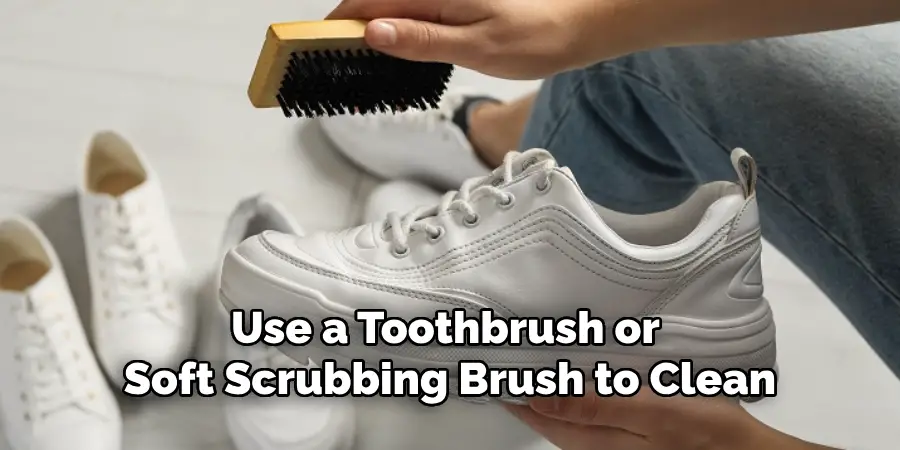
Wool Shoes:
Wool shoes should be treated with care to maintain their softness and shape. Handwash these in cold water using a gentle, wool-friendly detergent. Agitate the water with your hands and gently rub the shoes to clean. Rinse thoroughly with cold water to remove all soap residue. Press the water out gently without wringing and lay them flat on a towel to air dry.
By following these specific cleaning recommendations, parents can ensure their children’s shoes are well-maintained, comfortable, and durable, regardless of the material.
Things to Consider When Choosing Children’s Shoes
When shopping for children’s shoes, it’s not just about the visual appeal or the latest trends. Several key factors need to be considered to ensure the footwear supports healthy foot development, offers comfort, and withstands the rigors of play. Here are some points to ponder:
- Fit and Size: Children’s feet grow rapidly, and wearing shoes that are too small can cause discomfort and affect foot development. Conversely, shoes that are too large can lead to tripping and injuries. Measure your child’s feet regularly and allow for about a thumb’s width of space in front of the toes for the best fit.
- Breathability: Opt for shoes made from natural materials, such as leather or canvas, which allow feet to breathe. This is particularly important in preventing excess moisture that can lead to odor and fungal infections.
- Flexibility: Soft, flexible soles are best for children’s shoes, especially for toddlers who are still mastering the art of walking. Shoes should bend with the feet, providing protection without restricting movement.
- Durability: Kids are hard on their shoes, so look for footwear that can withstand a good deal of wear. Durable materials and robust construction will ensure the shoes last longer and provide value for money.
- Support: Good arch support and a snug fit at the heels are important to help kids maintain balance and posture. Check that the shoes have a solid, stable base, particularly for athletic shoes designed for specific activities.
- Ease of Use: For younger children, choose shoes with Velcro straps or easy-to-tie laces. This encourages independence and makes it easier for them to put on and take off their shoes.
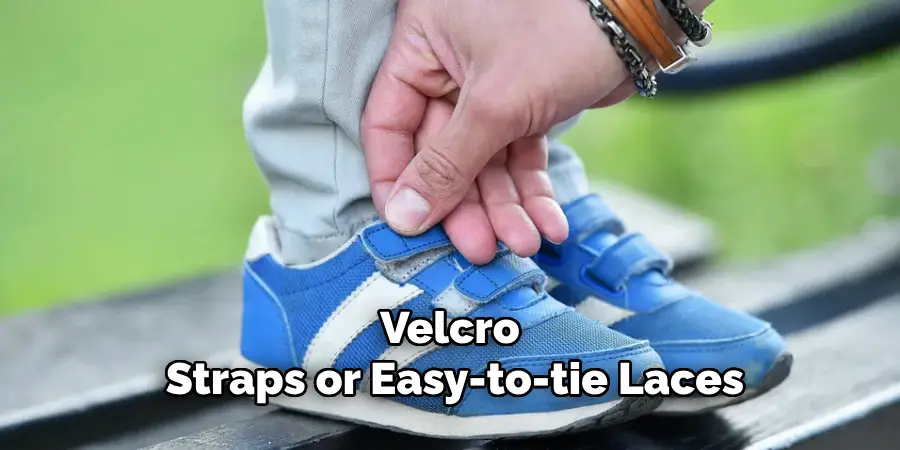
Conclusion
In conclusion, maintaining clean shoes for kids is not only about aesthetics but also about their health and well-being. By following the comprehensive guide outlined above, parents can ensure that their children’s footwear remains free from dirt, bacteria, and odors, promoting foot hygiene and preventing potential infections.
Establishing regular cleaning routines and teaching kids about shoe care responsibility fosters good habits and instills a sense of pride in their belongings. Moreover, prioritizing safety considerations and opting for eco-friendly cleaning options contribute to a healthier environment for both children and the planet. Thanks for reading our blog post on how to clean kids shoes! We hope you found it helpful and informative.

